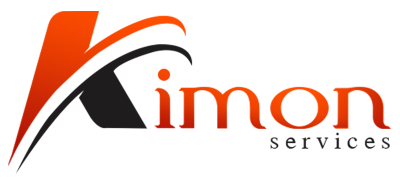In today’s business environment, the boundaries of team structures are being constantly redrawn. The globalisation of the workforce means companies are often a blend of in-house staff and outsourced professionals. This hybrid model offers a myriad of benefits, from cost savings to tapping into specialised skills from every corner of the world. However, it also brings its own unique set of challenges, primarily centering on the effective collaboration between in-house and outsourced teams.
The differences between these teams might be vast, ranging from cultural nuances and time zones to divergent communication styles and working methodologies. But, the true mark of a successful enterprise is its ability to bridge these divides and function as a cohesive unit. A well-coordinated partnership not only amplifies productivity but also fosters innovation, making the whole much greater than the sum of its parts.
In the forthcoming discussion, we’ll dive deep into strategies and insights that promote harmony between in-house and outsourced members, ensuring that both groups pull in the same direction to achieve overarching business goals. Whether you’re a startup trying to scale with the help of external professionals or an established firm augmenting your in-house talent, understanding the art of collaboration in this blended workforce is imperative.
Join us as we embark on this exploration, ensuring that every team member, regardless of their physical location or affiliation, feels integrated, valued, and aligned with the company’s vision.
The Multifaceted Benefits of Integrating In-House with Outsourced Teams
Diving directly into the heart of the matter, the integration of in-house and outsourced teams can be a game-changer for businesses. With careful planning, an understanding of challenges, and the strategic use of collaboration tools, firms can maximise output while leveraging the unique advantages of both in-house and outsourced members.
Enhancing Productivity and Efficiency
Maximising team output is a pivotal benefit. Collaborative technology, such as team collaboration software, facilitates workflow synchronisation between different teams. By employing strategies for seamless team integration, like unified project management, companies witness enhanced productivity.
Achieving Alignment in Organisational Goals and Objectives
It’s essential to have remote team alignment. This is where tools for team coordination come into play. Effective communication for in-house and outsourced teams ensures a mutual understanding of objectives. Collaboration best practices, be it through regular check-ins or utilising collaboration tools for in-house and outsourced teams, are crucial for alignment.
Promoting Cross-Cultural Exchanges and Experiences
The blend of in-house and outsourced teams often results in a mix of cultural backgrounds. This cross-cultural setting provides an avenue for learning and sharing diverse perspectives. However, it’s not without its challenges. Cross-cultural collaboration challenges, such as bridging communication gaps, can arise. But with the right strategies, including inter-team dynamics and team bonding exercises, such barriers can be overcome.
Overcoming Collaboration Challenges in Remote Teams
Remote teams, be they outsourced or in-house, face unique challenges. Building trust between in-house and outsourced members is paramount. Trust fosters a more conducive environment for collaboration between teams. Activities aimed at enhancing collaboration with the right technology can bridge the distance in team collaboration, ensuring that distance is no longer a barrier.
Furthermore, understanding the nuances of in-house vs. outsourced teams allows businesses to tailor their approach. Onboarding an outsourced team differs from in-house team management. Recognizing this difference and leveraging tools, such as team collaboration software, ensures smoother integration.
Enhancing Productivity Through Team Collaboration
For companies aiming to boost their ROI, understanding collaboration ROI becomes essential. Benefits of team collaboration include more significant innovation, quicker problem-solving, and improved efficiency. The synergy between in-house and outsourced teams, facilitated by global team management practices, can significantly elevate business performance.
By recognizing and surmounting the challenges of working with outsourced teams, and by capitalising on the strategies for effective team communication, organisations can truly harness the power of collaboration. From expanding capabilities to fostering cross-cultural exchanges, the integration of in-house and outsourced teams can redefine the way businesses operate, drive productivity, and foster innovation.
Challenges and Barriers to Team Collaboration
The evolving dynamics of the workplace, particularly post-pandemic, have underscored the importance of effective collaboration between teams. Yet, as businesses tap into the wealth of talent available across geographies, they simultaneously grapple with a series of challenges that can obstruct efficient teamwork.
Addressing Remote Work Challenges
With the surge in remote working, teams face the daunting task of establishing seamless workflows and maintaining productivity. Collaboration tools for in-house and outsourced teams become crucial in this context, fostering team integration even when members are miles apart.
| Remote Work Challenges | Solutions |
| Disparate Work Environments | Unified project management |
| Varied Access to Resources | Cloud-based collaboration tools |
| Lack of Face-to-Face Interaction | Regular virtual team bonding activities |
Cross-Cultural Nuances
Collaboration between teams hailing from different cultural backgrounds is both a boon and a challenge. Cross-cultural collaboration challenges arise when misunderstandings occur due to varied communication styles or work ethics. Building awareness, promoting respect for differences, and deploying collaboration best practices are pivotal to bridging these gaps.
Trust Barriers between In-house and Outsourced Members
Building trust with remote teams, especially outsourced ones, is paramount. Trust is the bedrock of collaboration, yet establishing it without face-to-face interaction can be challenging. Strategies such as regular check-ins, transparency in communication, and collaborative technology usage can alleviate these trust barriers.
Navigating Time Zones, Communication Hurdles, and Potential Misalignments
Time zones can be a logistical nightmare. A collaboration challenge often overlooked is synchronising meetings or work hours, especially for cross-functional teams. Collaborative technology, like team collaboration software, assists in alleviating these challenges. Moreover, bridging communication gaps is crucial. Outsourced team onboarding and ongoing training can ensure everyone is on the same page.
Furthermore, potential misalignments in goals can disrupt workflow synchronisation. Whether it’s the nuances of in-house vs outsourced teams or different departments, alignment is crucial. Using tools for team coordination and fostering a culture of open communication can mitigate such challenges.
Strategies and Tools for Overcoming Barriers
The post-pandemic world demands robust strategies for seamless team integration. Recognizing collaboration challenges is the first step. Tools and strategies, ranging from collaborative technology to global team management practices, are essential for overcoming these barriers.
For instance, maximising productivity through team collaboration becomes feasible when using team synchronisation strategies. Workflow synchronisation tools and software ensure projects progress smoothly, even in the face of challenges. Effective communication for in-house and outsourced teams, enhanced by modern collaboration tools, bridges many of the gaps discussed.
The hurdles in fostering collaboration between teams are numerous, yet not insurmountable. Through awareness, strategic planning, and the adoption of the right tools, businesses can effectively navigate the challenges of remote work, cross-cultural nuances, trust barriers, and other logistical issues, ensuring a cohesive, productive, and integrated team.
Strategies for Seamless Team Integration
In the realm of collaboration between teams, especially between in-house and outsourced units, trust stands as a critical pillar. Fostering trust involves consistent transparency in all operations, allowing team members to understand the rationale behind decisions. Regular check-ins, facilitated by collaboration tools for in-house and outsourced teams, ensure everyone is updated and issues are addressed promptly.
| Trust-Building Mechanism | Benefits |
| Transparency in Processes | Improved team cooperation metrics |
| Regular Team Check-ins | Enhanced team communication and reduced misunderstandings |
| Team Bonding Activities | Strengthened inter-team dynamics and camaraderie |
Cross-Cultural Training for Better Understanding
One can’t overlook the challenges brought by cross-cultural differences, especially when addressing collaboration between teams from different backgrounds. Integrating outsourced collaboration requires a deep understanding of these nuances. Investing in cross-cultural training fosters patience, understanding, and a unified project management approach that respects diverse inputs.
Reviewing and Updating Processes Regularly
For effective team integration, reviewing and realigning processes is vital. This strategy ensures that both in-house and outsourced units operate in sync. Utilising tools for team coordination can help in bridging communication gaps, promoting workflow synchronisation, and ensuring that there’s no lag or overlap in responsibilities.
| Process Enhancement Steps | Advantages |
| Regular Review of Workflows | Ensures outsourced and in-house team advantages are leveraged |
| Feedback Integration | Continuous improvement and adaptability |
| Alignment with Collaboration Best Practices | Maximises team output and ROI |
Inclusive Goal Setting and Strategy Formulation
Another pivotal strategy is to involve all team types in goal setting and formulating strategies. Encouraging both in-house and outsourced members to partake ensures everyone is aligned with the company’s vision. This inclusive approach boosts team morale, and using team collaboration software can aid in keeping everyone on track.
Tools and Tactics to Aid Integration
Maximising productivity through team collaboration is an ongoing journey. Adopting the right collaborative technology goes a long way in smoothing out the integration process. For instance:
- Team Bonding: Effective remote team-building activities, such as virtual escape rooms or trivia sessions, can build rapport.
- Collaboration Platforms: Tools like Slack or Trello assist in team communication and task management, simplifying the integration process.
- Feedback Mechanisms: Platforms like SurveyMonkey can gather feedback from both in-house and outsourced teams, which is crucial for continuous improvement.
Pillars of Team Collaboration
In the age of remote work and outsourced collaboration, having the right tools is crucial for effective team integration. Platforms such as Slack, Zoom, and Trello have gained prominence as they cater to both in-house and outsourced teams. These platforms facilitate instant communication, task management, and workflow synchronisation, ensuring seamless collaboration between teams.
| Tool | Primary Function | Benefit |
| Slack | Team Communication | Bridging communication gaps & promoting inter-team dynamics |
| Zoom | Video Conferencing | Enhancing face-to-face interaction in remote setups |
| Trello | Task Management | Simplifying project tracking and maximising team output |
The Role of Technology in Enhancing Collaboration
Collaborative technology acts as a catalyst in fostering team cooperation metrics. From cloud storage solutions that ensure data accessibility to team collaboration software for unified project management, technology breaks down barriers. Especially in global team management, technology compensates for distance, varied time zones, and cross-cultural nuances, proving indispensable for collaboration between teams.
Effective Communication Strategies for Diverse Team Structures
Communication is the linchpin in ensuring collaboration ROI. For in-house team management, regular meetings and open channels for feedback work well. However, outsourced collaboration can benefit from:
- Clear Onboarding Processes: Efficient outsourced team onboarding ensures everyone starts on the same page.
- Tailored Communication Channels: Depending on the nature of tasks and time zones, designating specific channels for different teams fosters clarity.
- Cross-Cultural Training: To overcome cross-cultural collaboration challenges, teams should be equipped with knowledge about each other’s work cultures.
Consistent and Clear Communication in Overcoming Remote Challenges
Collaboration challenges in remote teams often stem from misalignment, trust issues, and communication lapses. Emphasising consistent, clear communication addresses these challenges. Strategies include:
- Regular Check-ins: Ensuring remote team alignment by touching base frequently.
- Use of Collaborative Platforms: Platforms that offer real-time collaboration, such as Google Workspace, ensure everyone has access to the latest information.
- Building Trust through Transparency: Be it in-house or outsourced, teams need to understand the rationale behind decisions. Sharing this fosters trust.
Reference Points for Further Exploration
- Benefits of Team Collaboration: A comprehensive guide to understanding how collaborative efforts enhance productivity.
- Effective Remote Team Building Activities: Dive deep into activities that foster team bonding, even when miles apart.
- Tools for Team Coordination: Explore a curated list of tools that promote effective coordination, be it in-house or with outsourced teams.
For those vested in the future of work, understanding the importance of tools, technology, and communication is non-negotiable. As teams diversify and the nature of work evolves, these three pillars stand firm, guiding teams towards greater collaboration and success.
Best Practices for Managing Both Team Types
Feedback is integral for team integration and to overcome collaboration challenges. Implementing regular feedback loops ensures that both in-house and outsourced teams continually improve their collaboration best practices. These loops can be facilitated using collaboration tools, ensuring transparency and addressing concerns in real time.
Integrating Outsourced Teams into Company Culture
For optimal collaboration between teams, it’s crucial that outsourced teams feel integrated into the company culture, enjoying similar benefits to in-house teams. This sense of belonging boosts productivity and promotes positive inter-team dynamics. The process starts from efficient outsourced team onboarding, introducing them to the company’s values, and ensuring regular team bonding activities, even in a remote setting.
Proactively Addressing Concerns with Empathy
Building trust between in-house and outsourced members requires proactive efforts. Addressing any concerns with empathy ensures that trust barriers are minimised. This is vital as trust forms the foundation of any collaboration, and in a remote setting, it becomes even more essential. Effective communication for in-house and outsourced teams, coupled with the right collaborative technology, can make this task simpler.
Conclusion
In the modern work landscape, fostering a harmonious relationship between in-house and outsourced teams is no longer a luxury, but a necessity. Leveraging the strengths of both team structures not only optimises productivity but also drives innovation. The key lies in effective communication, trust-building, and the integration of robust collaboration tools. When done right, merging the capabilities of these diverse teams can lead to outcomes that are greater than the sum of their parts. As businesses continue to evolve in an increasingly interconnected world, those who champion and master this collaboration are poised to lead the way. The fusion of in-house precision with outsourced expertise creates a synergy that pushes boundaries, making the future bright for businesses that embrace this collaborative approach.
FAQs
What is the importance of collaboration between teams?
Collaboration between teams is crucial because it facilitates knowledge sharing, fosters creativity, and promotes a unified approach to problem-solving. By collaborating, teams can leverage diverse skill sets, perspectives, and resources, leading to better solutions, improved efficiency, and faster innovation.
How do in-house and outsourced teams differ?
In-house teams are employees directly hired by a company, working on-site or remotely but fully aligned with the company’s culture and goals. Outsourced teams, on the other hand, are external groups hired to complete specific tasks or projects. They might not share the same deep connection with the company’s core values and could be geographically and culturally distant.
What are the challenges of remote team collaboration?
Challenges of remote team collaboration include communication barriers, time zone differences, cultural misunderstandings, lack of face-to-face interaction, potential feelings of isolation among team members, and technological issues.
How can teams enhance their collaboration efforts?
Teams can enhance their collaboration by setting clear goals, fostering open communication, utilising collaboration tools, regularly scheduling check-ins, providing training for team members, and promoting a culture of trust and respect.
Which tools are recommended for team collaboration?
Recommended tools for team collaboration include Slack for communication, Trello or Asana for task management, Zoom or Microsoft Teams for video conferencing, Google Workspace for document collaboration, and GitHub for software development collaboration.
Why is trust crucial in remote team communication?
Trust is crucial in remote team communication because, in the absence of face-to-face interactions, team members must rely on each other’s word and commitment to tasks. Trust ensures that team members feel secure in sharing ideas, taking risks, and believing that their colleagues will fulfil their responsibilities.
How to bridge the gap between in-house and outsourced teams?
Bridging the gap requires open communication, setting clear expectations, regular check-ins, cultural sensitivity training, and the use of collaboration tools. Additionally, fostering a sense of inclusion and ensuring that both teams understand the overall company goals and values can be beneficial.
What are the benefits of effective team collaboration?
Benefits of effective team collaboration include improved productivity, faster problem-solving, increased creativity and innovation, enhanced employee morale, and a more cohesive work environment.
Are there case studies showcasing successful team collaborations?
Yes, there are numerous case studies showcasing successful team collaborations across industries. For instance, tech companies like Google and Apple have documented cases highlighting the success of collaborative efforts in product development and innovation.
How can teams measure the success of their collaboration?
Teams can measure the success of their collaboration through various metrics like the achievement of set goals, the quality of output produced, feedback from team members, the speed of task completion, and the level of innovation demonstrated. Regular reviews and surveys can also provide insights into areas of improvement.






